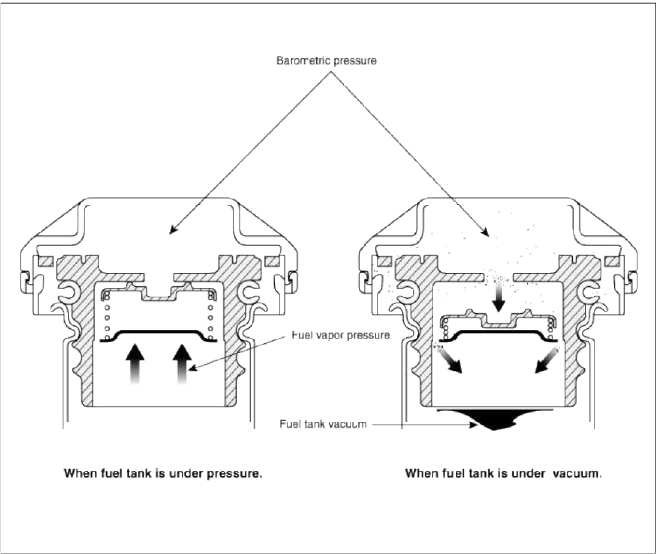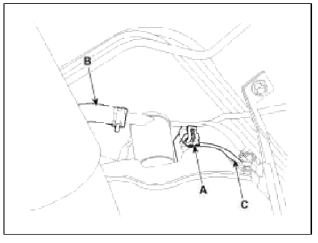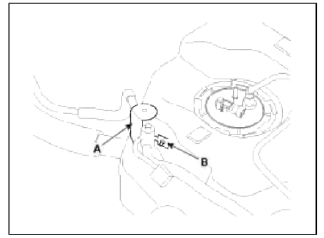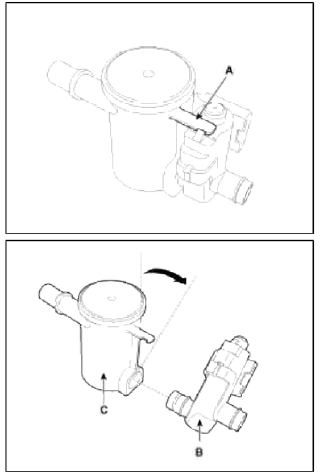Kia Sportage: Fuel Filler Cap | Fuel Tank Air Filter
Description and Operation
Description
A ratchet tightening device on the threaded fuel filler cap reduces the chances of incorrect installation, which seals the fuel filler. After the gasket on the fuel filler cap and the filler neck flange contact each other, the ratchet produces a loud clicking noise indicating the seal has been set.

Fuel Tank Air Filter
Repair procedures
Removal
1. Turn the ignition switch OFF and disconnect the battery negative (-) cable.
2. Lift the vehicle with a jack.
3. Disconnect the canister close valve connector (A).
4. Disconnect the ventilation hose (B) and vapor hose (C).

5. Remove the fuel tank air filter and canister close valve assembly (A) after removing the installation nut (B).

6. Release the lever (A), and then separate the canister close valve (B) from the fuel tank air filter (C) after rotating it in the direction of the arrow in the figure.

7. Install a new fuel tank air filter in accordance with the reverse order.
Installation
Installation is the reverse of removal.
Fuel tank air filter bracket installation nut: 4.8 ~ 5.2 N.m (0.5 ~ 0.53 kgf.m, 3.54 ~ 3.84 1b-ft)
READ NEXT:
 Description and Operation | Catalytic Converter | CVVT (Continuously Variable Valve Timing) System
Description and Operation | Catalytic Converter | CVVT (Continuously Variable Valve Timing) System
Description
Exhaust emissions (CO, HC, NOx) are controlled by a combination of engine modifications and the addition of special control components.
Modifications to the combustion chamber, in
SEE MORE:
 Leading Vehicle Departure Alert
Leading Vehicle Departure Alert
A: Driver Assistance
Driver Attention Warning
Leading Vehicle Departure Alert
Leading Vehicle Departure Alert: The
function will inform the driver when the
front vehicle departs from a stop.
Warning Timing
A: Driver Assistance
Warning Timing
Standard
Late
With
 Slide open/close
Slide open/close
Push the sunroof switch rearward to
the first detent position, the sunroof
glass opens. However, if the power
sunshade is close, the power sunshade
will open first.
Push the sunroof switch forward to
the first detent position, the sunroof
glass closes. However, if the sunroof
Content
- Home
- Kia Sportage - Fifth generation (NQ5) - (2022-2025) - Owner's Manual
- Kia Sportage - Second generation (JEKM) (2005-2015) - Body Workshop Manual
- Kia Sportage Third generation (SL) - (2011-2016) - Service and Repair Manual
- Sitemap
- Top articles